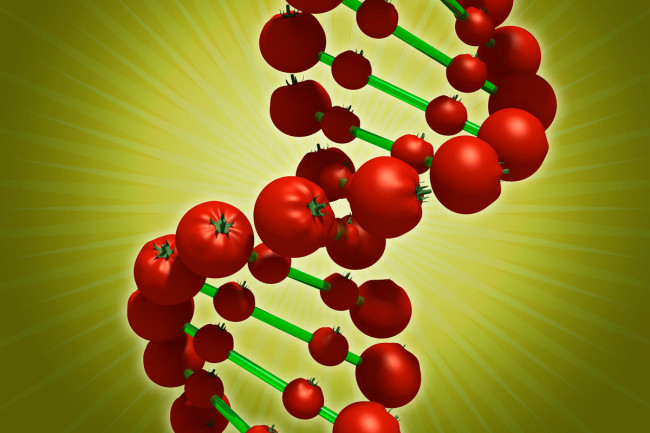It’s 2050, and you’ve just arrived on Mars. Your first meal awaits: a plate of spaghetti marinara made from fresh vine-ripened tomatoes. Tough to imagine, right?
The idea that astronauts might enjoy the fresh, cherry-red fruits has seemed borderline absurd. Tomato plants, with their sprawling vines and bulbous fruits, take up space - valuable space. And they’re extremely finicky.
But now, scientists have developed a way to genetically modify cherry tomatoes so they grow in tighter bunches and take up less space. This could be a game changer as the push to grow vertical, rooftop gardens increases and as humanity stretches out past low-Earth orbit toward the moon, and eventually, Mars.
In order to get the cherry tomatoes to bunch like grapes, three key genes within the plant’s DNA must be precisely tweaked using CRISPR gene-editing technology, according to a paper published today in the journal Nature Biotechnology.
Two of the genes, the so-called SELF PRUNING gene and the SP5G gene, control when the plant stops growing and starts flowering and fruiting. The SIER gene controls the length of the plant’s stems. Simply altering the first two genes resulted in tomato plants that didn’t produce a lot of fruit and tasted bad. It wasn’t until the scientists identified the third gene that they were able to produce the perfect plant.
The compact size isn’t the only benefit of these tightly bound cherry tomatoes. They also take less time to grow - about 40 days.
"This demonstrates how we can produce crops in new ways, without having to tear up the land as much or add excessive fertilizer that runs off into rivers and streams," plant biologist Zach Lippman of Cold Spring Harbor Laboratory said in a statement. "Here's a complementary approach to help feed people, locally and with a reduced carbon footprint."
Climate change is expected to change growing conditions here on Earth, worsening conditions for many crops. From tiered farmhouses to the moon - where space is limited and conditions are challenging - plants will need to be harvested quickly to maximize yield.
NASA has long worked to green its thumb in space. Experiments aboard the International Space Station have aimed to find creative ways to test plants' ability to survive and thrive in zero- and microgravity.
The “Veggie” experiment tested the ability of greens like zinnias to withstand celestial conditions by growing them in self containing pods. Previously, astronauts have sprouted red romaine lettuce and germinated hops and barley for beer. In experiments conducted on the International Space Station, some plants soaked up water and fertilizer too quickly in microgravity.
Efforts are also underway to make the parched Lunar and Martian soils more fertile for crop growth. In particular, Martian soils would be particularly challenging to cultivate, as they contain harmful compounds called perchlorates, which are harmful to humans.
Other projects like Lippman's aim to instead alter the plant to better fit the environment instead of the other way around. Next, he hopes scientists will test this method on another curious fruit: the kiwi.
https://www.popularmechanics.com/science/green-tech/a30310123/gene-edited-tomatoes


